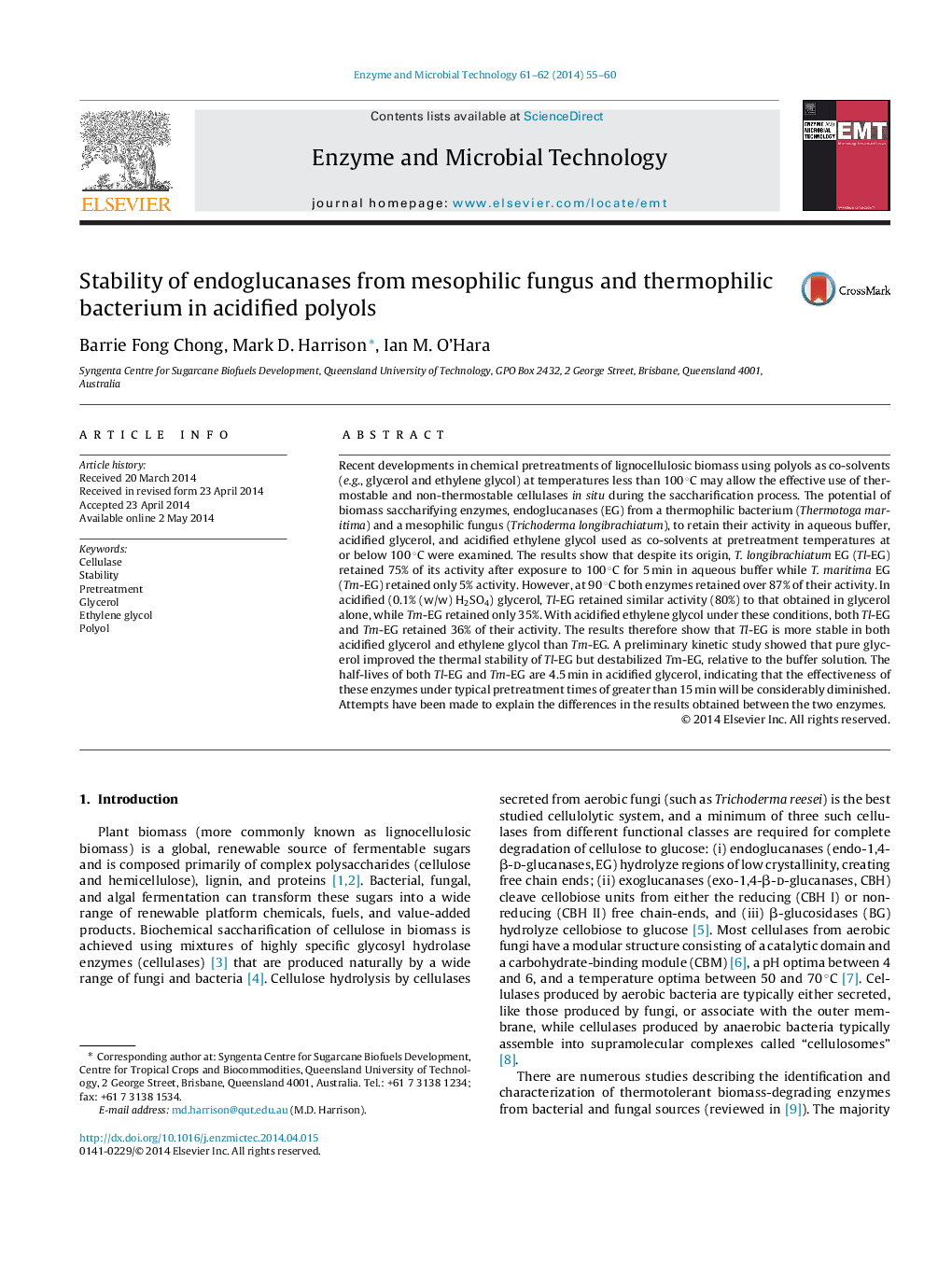| Article ID | Journal | Published Year | Pages | File Type |
|---|---|---|---|---|
| 17017 | Enzyme and Microbial Technology | 2014 | 6 Pages |
•Low temperature biomass pretreatments expand options for industrial enzymes.•Cellulase stability in low temperature polyol biomass pretreatments was assessed.•We show microbial cellulase retains activity after exposure to acidified polyol.•We show pure glycerol can either improve or reduce stability of microbial cellulase.
Recent developments in chemical pretreatments of lignocellulosic biomass using polyols as co-solvents (e.g., glycerol and ethylene glycol) at temperatures less than 100 °C may allow the effective use of thermostable and non-thermostable cellulases in situ during the saccharification process. The potential of biomass saccharifying enzymes, endoglucanases (EG) from a thermophilic bacterium (Thermotoga maritima) and a mesophilic fungus (Trichoderma longibrachiatum), to retain their activity in aqueous buffer, acidified glycerol, and acidified ethylene glycol used as co-solvents at pretreatment temperatures at or below 100 °C were examined. The results show that despite its origin, T. longibrachiatum EG (Tl-EG) retained 75% of its activity after exposure to 100 °C for 5 min in aqueous buffer while T. maritima EG (Tm-EG) retained only 5% activity. However, at 90 °C both enzymes retained over 87% of their activity. In acidified (0.1% (w/w) H2SO4) glycerol, Tl-EG retained similar activity (80%) to that obtained in glycerol alone, while Tm-EG retained only 35%. With acidified ethylene glycol under these conditions, both Tl-EG and Tm-EG retained 36% of their activity. The results therefore show that Tl-EG is more stable in both acidified glycerol and ethylene glycol than Tm-EG. A preliminary kinetic study showed that pure glycerol improved the thermal stability of Tl-EG but destabilized Tm-EG, relative to the buffer solution. The half-lives of both Tl-EG and Tm-EG are 4.5 min in acidified glycerol, indicating that the effectiveness of these enzymes under typical pretreatment times of greater than 15 min will be considerably diminished. Attempts have been made to explain the differences in the results obtained between the two enzymes.
